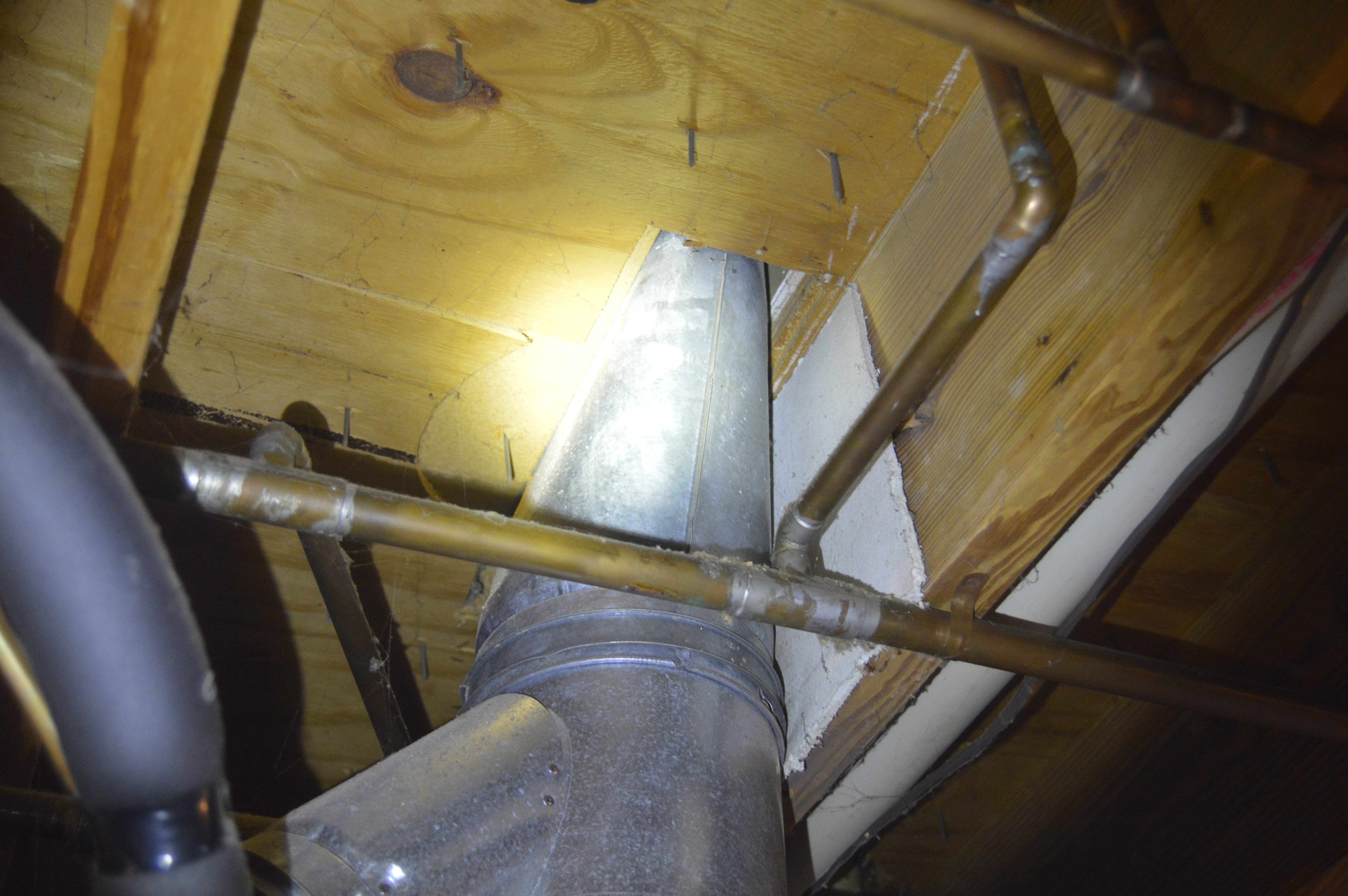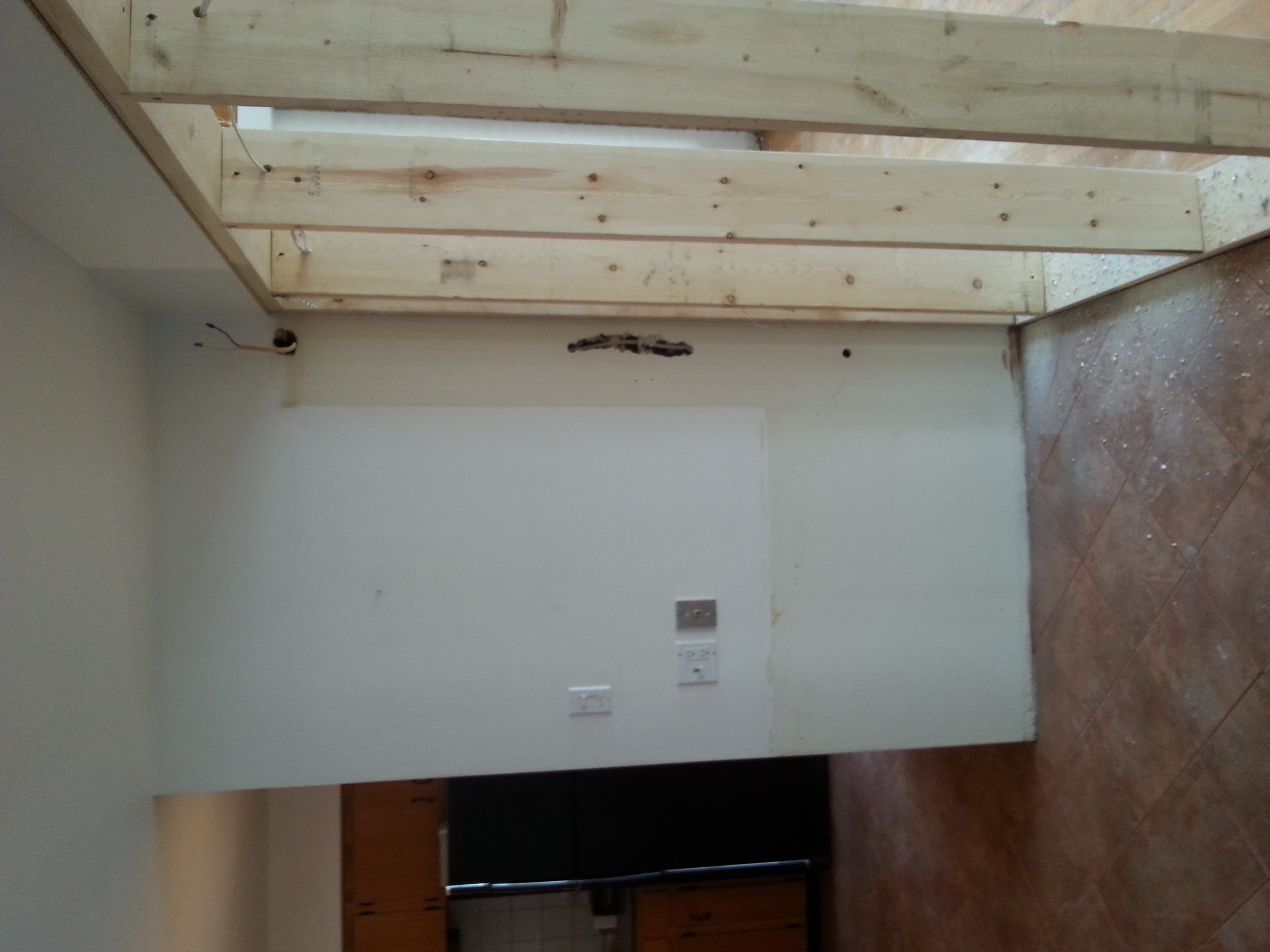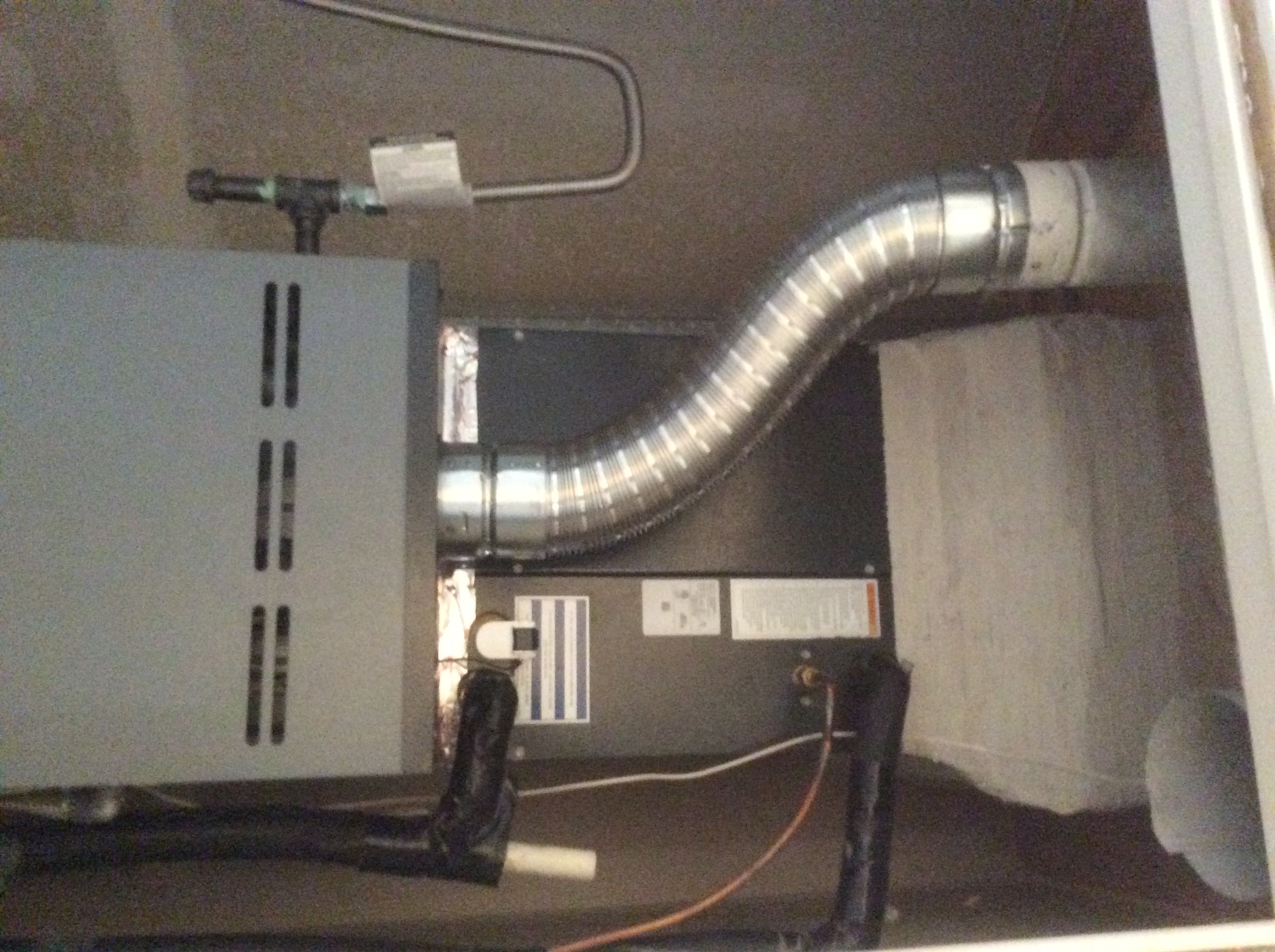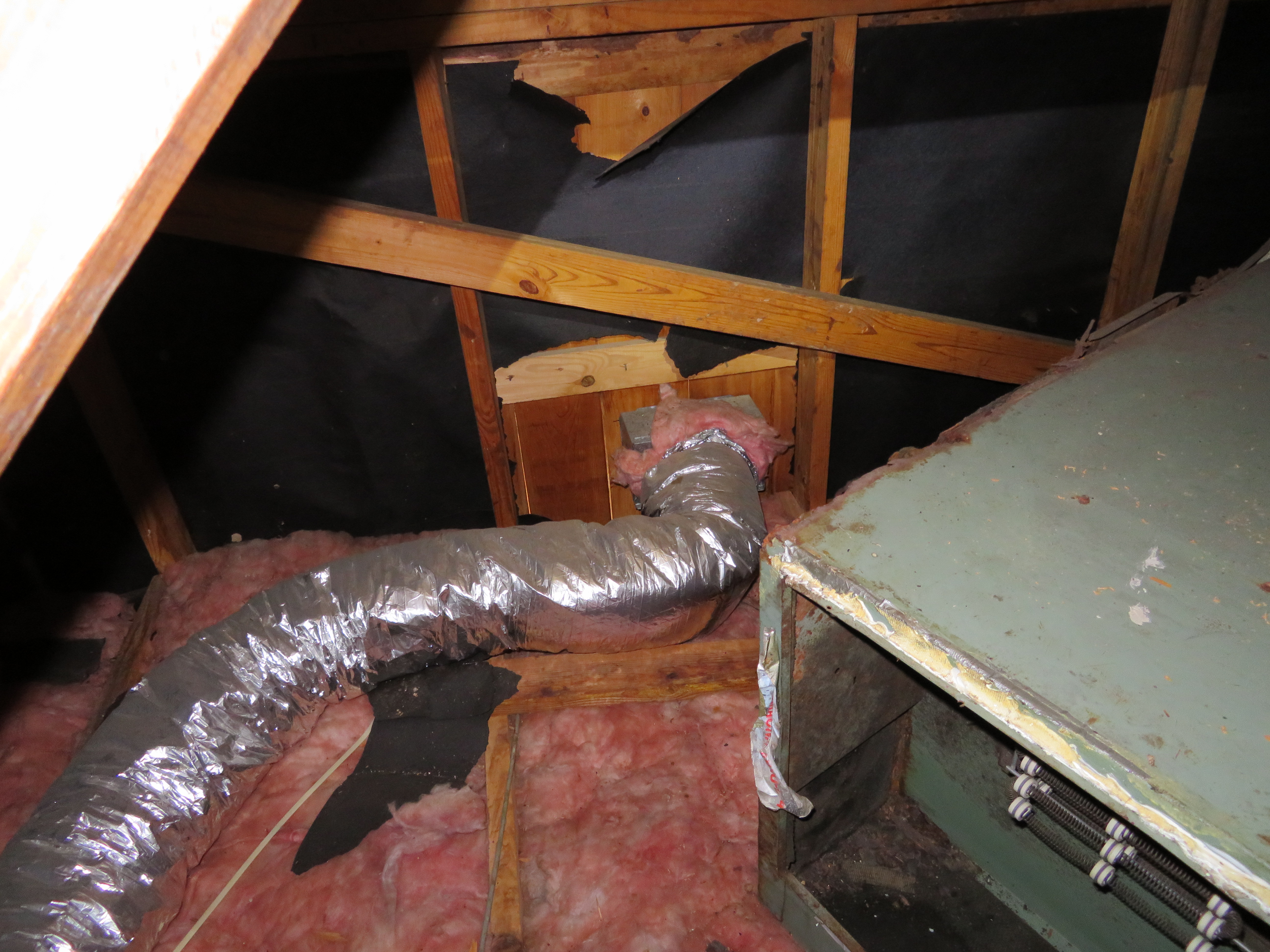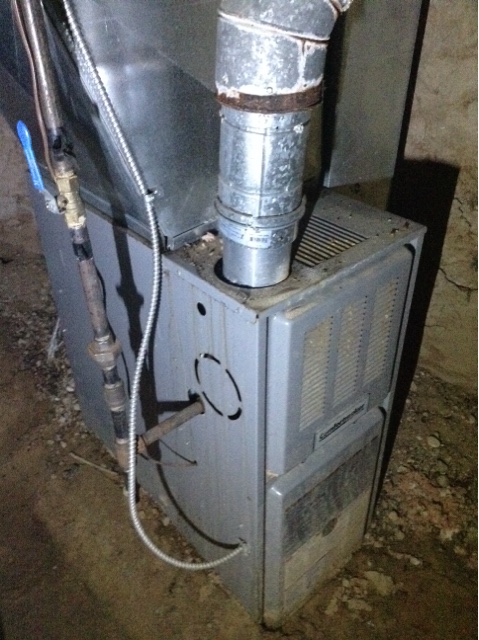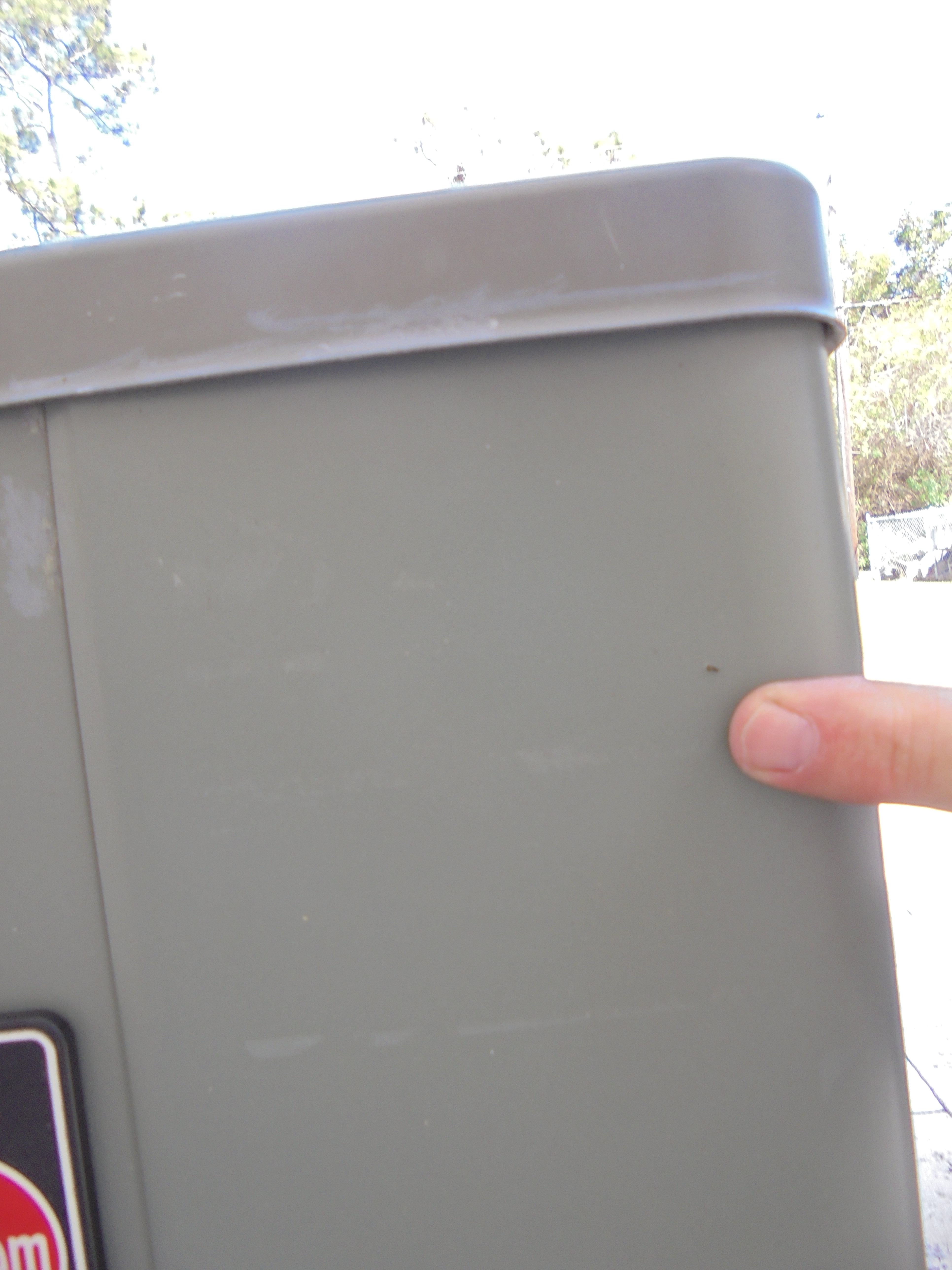Chimney Flashing. From the image I was able to study it looks like there is 4 types of chimney flashing. Head, Step, counter, and apron flashing. One detail I noticed is that that the counter flashing must be attached to the mortar joint, and that they overlap each other so that moisture can run off instead of becoming trapped causing structural problems, or problems with the roofing system as a whole.
This Furnace is a 80-85% efficient unit. It is a 2006 model that is in good working order. There is a hot surface ignitor and in shot burners. When going through this unit it has a double wall vent pipe but it did not obtain the recommended 1" clearance that is required for safety. I also noted that it should be serviced by a qualified HVAC contractor
Hot water recirculation systems move hot water to fixtures at a more rapid rate. Instead of wasting water and putting more cold water down the drain waiting for it to warm up making it a bit more efficient way to go.
I took this picture because my Electrician need to know the location of
the light box. I have just two similar pictures on my cell phone right now
who I can transfer to this file above. Now I need another fifty five words
to describe this picture and submit my essay. The picture shows a small
renovation.
I took this picture because my Electrician need to know the location of
the light box. I have just two similar pictures on my cell phone right now
who I can transfer to this file above. Now I need another fifty five words
to describe this picture and submit my essay. The picture shows a small
renovation.
I observed a new furnace installed in good condition. I observed that the furnace was installed in a hall closet with proper combustion, and the door sealed. The furnace was started and the induction fan operated normally. The burners lit and were operational.
I read the article Central Air-Conditioning System Inspection. I find the information about replacing or cleaning filters important for home owners to prevent excess stress in the HVAC system. As per the article, dirty filters may impact air quality, reduce energy efficiency, and create stress on the motor.
This is my residence AC unit. The fins are in good condition, it has a sturdy foundation, and the suction line is well insulated. You can see the disconnect in the background, well within the required eyesight. Service records indicate it has not been serviced in a few years, so I would call that out.

I read the article titled: Central Air-Conditioning System Inspection.
It talks about how to do an inspection of a central AC system. It applied to me because it is about that time of year that we will start to use the AC. I followed the article and checked all components and tested the system.
This system is a Grand Aire 3 ton split system heat pump. The outdoor condensing unit is currently on a wooden platform to help prevent flood water exposure. This system was installed less than six months ago. All components seem to be intact and working as they should. There are no notable deficiencies at the time of this inspection.
After reading the “Caution on using XRF alone from the identification of problem drywall”, it seems that even with high tech gadgetry it still boils down to a very basic principal. If you don’t have the proper training, the high tech stuff is mostly not useful. It also leads one to wonder how many millions of dollars were spent rectifying problems that potentially didn’t exist.
This picture was taken during a recent inspection,
This homeowner ran a supply duct and A/C vent to the exterior to supply conditioned air to an outside patio.
In addition the felt paper was compromised in the process, this definitely went in my inspection report as a major defficiency.
This furnace is from an inspection I performed a month or so ago. The furnace was in crawlspace which had been hand dug out to accept the furnace, water heater, and well pressure tank. The furnace was sitting on a concrete pad which, I assume, at one time was sitting above the dirt floor. I assume the walls had collapsed and covered the bottom of the furnace in dirt which had soaked up moisture and rotted the bottom of the furnace cabinet. As you can image the inside of the furnace cabinet was deteriorated and not clean. Upon inspection of the filter, located in an access panel from the main home, it was clogged and bent allowing debris to enter the cabinet.
Needless to say I recommended a full inspection by a licensed HVAC contractor before my clients action deadline.
I read the article entitled Homeowner Maintenance: Changing the HVAC Filter by Nick. The article is a very good explanation of why and how often home owners need to change their air filters. I will be adding this to my bolg at www.CardInspectionservices.com to better inform my clients.
This system has a data tag that has either been removed or is illegible due to the Florida sun. This is a problem many Florida inspectors encounter regularly, as I am sure others around the country do as well. The high levels of UV light in subtropical south Florida often cause data tags to become unreadable, and thus, unusable. This is a reporting problem and potential inspection problem if the inspector cannot properly identify the unit for a client.
Central Air-Conditioning System Inspection
by Nick Gromicko
This was a very informative article that would help any inspector improve his presentation skills and AC knowledge. One of the most helpful things we can do, as inspectors, is educate our clients. Many clients have no mechanical background and have no idea how to maintain their units after purchase. This article was very helpful in giving ideas on what to show to your clients.
It has many benefits that a heat pump use the refrigerant to run in heat cycle and be self sufficient as an alternative means of heat to an ordinary A/C system which has to have a separate heat source.
In Texas we don’t run into many heat pumps, gas furnaces are common here, but it would be interesting to run into one and run it to observe it’s operation in heat cycle.
This mid-efficiency furnace was found to be in good condition with no visible defects. There was a sufficient fresh air supply and it was properly vented. The gas supply was properly installed with a shut off valve located in the proper location.

The article on identifying and describing heating systems notes that there a basically four ways to identify a heating system. The heat-conveying medium, the fuel used, the nature of the heat and the efficiency and the capacity of the system.
Upon completing the 18 videos on the advanced HVAC training, I know I will never look at another HVAC system the same, as this was the purposeful intention of this course, and it was also a lesson in some of the basic events that happen in our world as we manipulate and use our natural resources to our advantage. One area of this course that I felt was the most interesting and most nostalgic was the section on boilers, and hot water heating. During this section, my mind wandered back to my childhood and the chicken farm where I grew up. My dad had just built a huge two-story chicken barn and the talk in the neighbourhood was that it was going to be heated by hot water. Wow, not only was this new barn going to be heated by hot water but one of the older barns adjacent to it was also slated for hot water heating as well. This was a new type of heating for the young chickens, which needed to be maintained at a constant temperature of about 90 for the first week. I remember the fellow that was there for weeks and weeks just welding pipes together to run down the length of these barns, which were approximately 200 feet each, and there were six rows of these pipes on each floor. We built a separate building, which was about the size of a small garage to house the boiler and all the plumbing required. To me, this was a very special place, lots of pipes, valves, taps, gauges, switches, and many other things I did not understand, and everything seemed to be a huge wonderful mystery, I was about eight years old. When this boiler and all these fittings finally got put together an fired up, it was like magic, it came to life, like a fire breathing beast towering above me, there were lots of flames underneath, switches and valves opening and closing, pumps were running and shutting off, pipes in and pipes out, pipes running underground, there were pipes everywhere. And whenever this boiler fired up, you could see the flash and flames underneath, which lit up the whole room, then you would hear the pumps start up, then the pipes would start to make a funny ticking sound as everything got hot and the water began to flow. As time went by I began to understand what these components were and how they worked. But the memory of this system and the magic it performed has left me with many fond memories of that hot water heating system. As I worked my way through this course I had many reflections back to the parts and components that I remember but did not understand their function. In closing, I would like to say thank you to Bill, who graciously explained everything in such a way that you could almost visualize the equipment operating.
